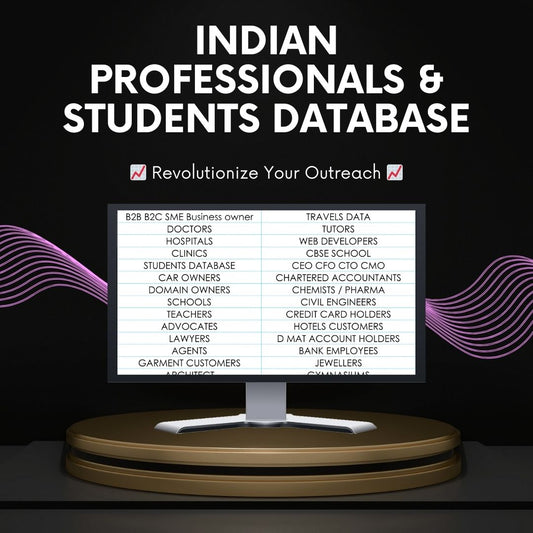AI: Explained
Share
Artificial Intelligence (AI) has become a buzzword in today’s technology landscape, but what does it truly mean? This blog will delve into the intricacies of AI, its components, its applications, and the ethical dilemmas it presents.
By breaking down complex concepts, we aim to provide a clear understanding of how AI is shaping our world.
Understanding Artificial Intelligence
At its core, AI refers to computer systems designed to mimic human intelligence. This broad definition encompasses various technologies and methodologies. However, to grasp AI fully, we need to explore three fundamental aspects: machine learning, neural networks, and natural language processing.
Machine Learning
Machine learning is a subset of AI focused on developing algorithms that allow computers to learn from and make predictions based on data. The essence of this process lies in identifying patterns within vast datasets. For instance, when you take a picture of a cat using Google Lens, the AI recognizes it as a cat based on countless images it has processed previously.
This capability allows the system to not only identify the current image but also to improve its understanding over time. As it encounters more data, it refines its predictions and enhances its accuracy. This is the foundation upon which many AI applications operate.
Neural Networks
Neural networks take machine learning a step further by mimicking the human brain's structure. They consist of interconnected nodes that simulate neurons, enabling the system to process information and weigh the significance of different data points. This architecture allows neural networks to tackle complex tasks, such as image and speech recognition.
However, neural networks are not infallible. They can produce unexpected results based on their training data. A notable example includes an AI trained to recognize a specific fish species that mistakenly identified human fingers as part of the fish due to the prevalence of images depicting people holding the fish.
Natural Language Processing
Natural language processing (NLP) is another critical aspect of AI, focusing on the interaction between computers and human language. This field encompasses teaching machines to understand, interpret, and respond to human language in a meaningful way.
Creating an AI that can make jokes or engage in natural conversation is a testament to the advancements in NLP. For example, when prompted to make a tech joke about Apple, an AI could respond with, "Why did the Apple employee quit his job? Because he couldn't find a Windows to open." This capability illustrates AI's potential to understand context and humor, which is a significant leap forward in machine learning.
The Role of Big Data
All these AI technologies rely heavily on big data, which refers to massive datasets that are too complex for traditional data-processing applications. The rise of affordable data storage solutions and powerful computing has made it feasible to analyze and learn from vast amounts of information.
Modern supercomputers can perform quintillions of calculations per second, enabling them to process big data efficiently. This capability is essential for training AI systems, allowing them to learn from diverse datasets and improve their performance continually.
Advantages of AI
AI offers numerous benefits, particularly in automating repetitive tasks. Once a machine learning model is trained to perform a task, it can execute it indefinitely with increasing accuracy. This aspect of AI can significantly reduce human workload in various fields, including data entry, customer service, and even content creation.
- Efficiency: AI can handle tasks faster than humans, often with greater precision.
- Availability: Unlike humans, AI systems do not require breaks, allowing them to operate continuously.
- Data Analysis: AI can analyze large datasets to identify trends, making it invaluable in fields such as healthcare and finance.
AI in Everyday Life
AI has permeated various aspects of daily life, from recommendation systems on streaming platforms to smart assistants on our phones. These technologies enhance user experience by tailoring services to individual preferences.
For instance, AI can analyze your app usage habits, preparing frequently used apps for quick access while placing less-used ones in hibernation. This personalization makes interactions with technology smoother and more efficient.
AI’s Creative Capabilities
One of the most striking developments in AI is its ability to create. Tools like DALL-E and ChatGPT can generate images, stories, and even music from scratch. This capability raises questions about creativity and originality in the digital age.
The Challenge of AI-Generated Content
While AI can produce impressive results, it often relies on existing works to inform its creations. For example, generating an image in the style of Picasso requires the AI to analyze and learn from countless pieces of Picasso's art. This reliance raises ethical questions about ownership and copyright.
Copyright and Ownership Issues
The question of ownership for AI-generated content is complex. If an AI creates a piece of art resembling Picasso's style, who owns it? The artist whose work inspired it, the company that created the AI, or the user who prompted the generation? This ambiguity poses significant challenges for creators and lawmakers alike.
Ethical Concerns and Risks
As AI technology advances, it brings forth various ethical dilemmas. One significant issue is bias in AI systems. AI learns from data, and if that data contains biases, the AI will likely perpetuate those biases in its outputs.
A notable example occurred when Amazon scrapped an AI recruitment tool that favored male candidates based on historical hiring data. This incident highlights the challenge of ensuring fairness in AI applications.
The Potential for Misuse
The accessibility of AI tools also raises concerns about their potential misuse. With AI capable of generating realistic images and text, the risk of creating fake news or misleading content increases. This potential for deception poses a threat to information integrity.
The Future of AI
As AI continues to evolve, it is essential to address its implications thoughtfully. While AI has the potential to revolutionize many industries, it is crucial to establish regulations and ethical guidelines to mitigate risks.
Integrating AI responsibly into society will require collaboration between technologists, ethicists, and policymakers to ensure its benefits are maximized while minimizing harm.
Conclusion
The exploration of AI reveals a technology with profound implications for our future. From enhancing productivity to raising ethical concerns, AI is a double-edged sword. Understanding its capabilities and limitations is vital as we navigate this new technological landscape.
As we embrace AI, we must also remain vigilant about its potential pitfalls. By fostering a dialogue about its ethical use, we can harness the power of AI for the greater good while safeguarding against its risks.



